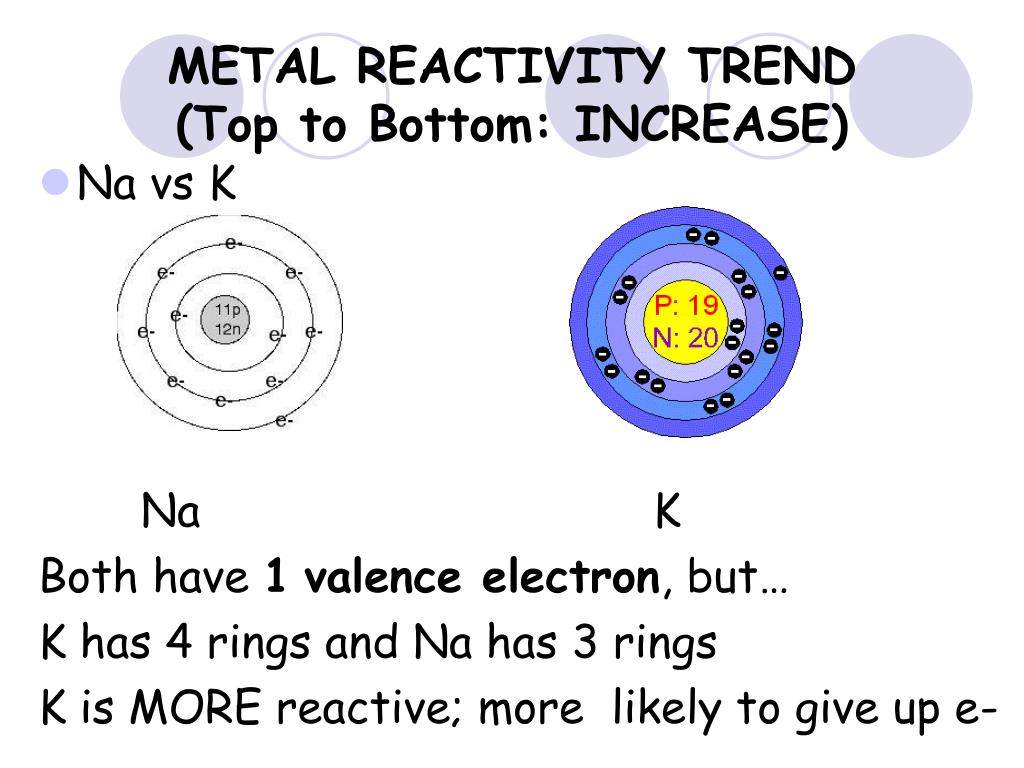


Most of the transition metals are paramagnetic in nature due to the presence of unpaired electrons. Diamagnetic substances are repelled by the applied field while the paramagnetic substances are attracted. When a magnetic field is applied to substances, mainly two types of magnetic behaviour are observed: diamagnetism and paramagnetism (Unit 1). E 0 values for the redox couple M 3+/M 2+ indicate that Mn 3+ and Co 3+ ions are the strongest oxidizing agents in aqueous solution whereas Ti2+, V2+ and Cr2+ are strongest reducing agents and can liberate hydrogen from a dilute acid, e.g.,.

#Transition metal reactivity trend series#
As already explained, less negative E 0 values for M 2+/M along the series indicate a decreasing tendency to form divalent cations.Thus, they are oxidized by H + ions though the actual rate is slow, e.g., Ti and V are passive to dilute non-oxidizing acids at room temperature. The metals of the first transition series (except copper) are relatively more reactive than the other series.This chapter presents the catalytic performance of transition metal sulfide nanostructures for water splitting by focusing on the current status of synthesis protocols. Some results of chemical reactivity of transition metals as related to their E 0 values are given below: Nanoarchitectures are the trending form of transition metal sulfides for efficient energy conversion applications. Some of them are highly electropositive and dissolve in mineral acids whereas a few of them are ‘noble’, i.e., they do not react with simple acids. 2,3 Thus, many of the examples chosen to illustrate general reactivity and structural trends are focused on the mercury compounds of transition metals. The transition metals vary very widely in their chemical reactivity. This undoubtedly reflects the trend in the heterolytic cleavage reactions Zn > Cd > Hg and has a parallel in the organometallic derivatives R 2 M for group 12.


 0 kommentar(er)
0 kommentar(er)
